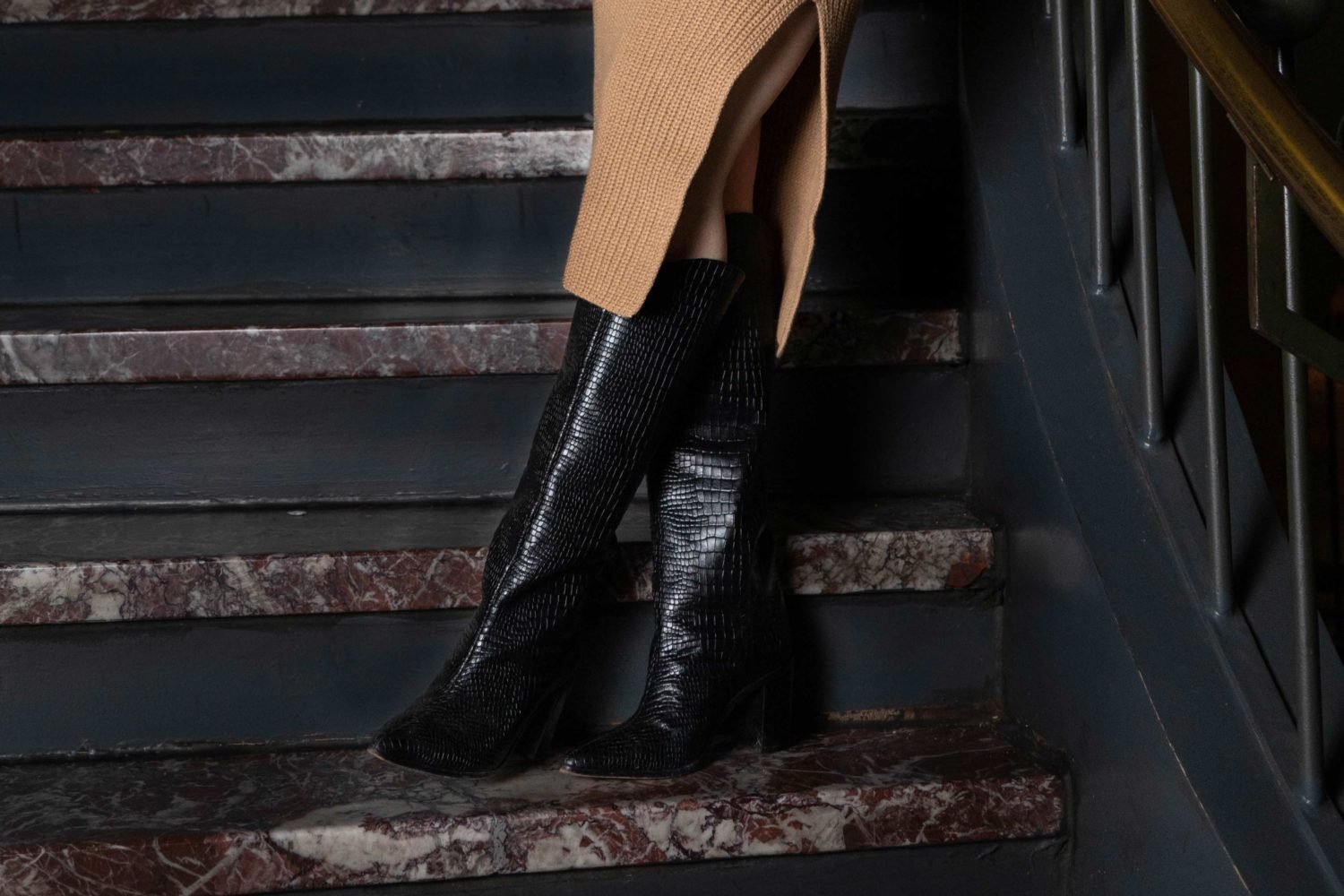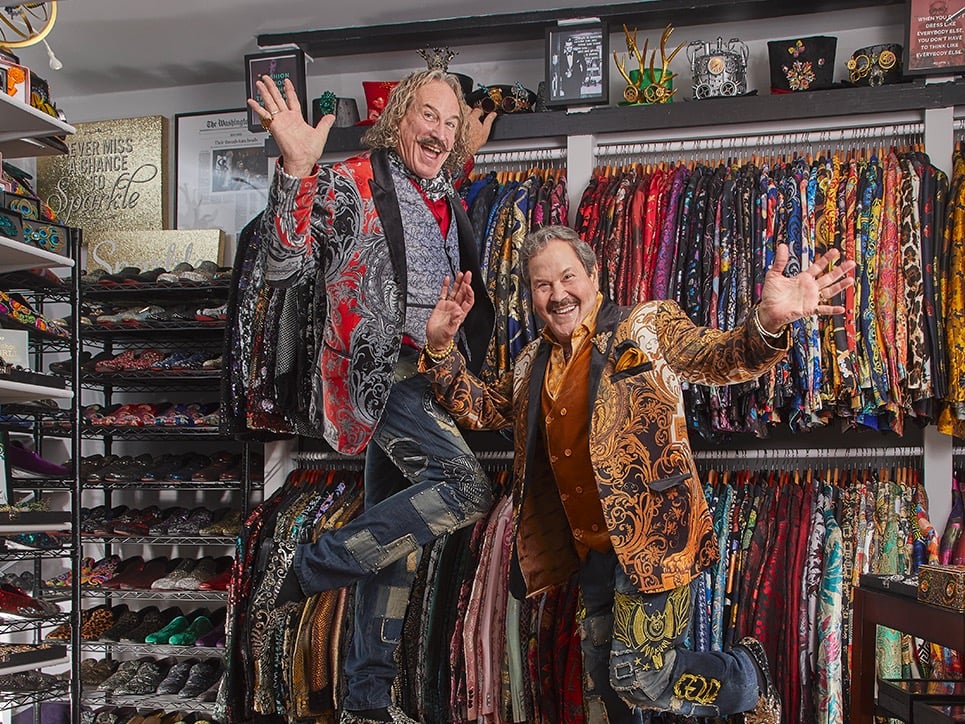Patrick is 71. He looks 61. Back in February, the retired Alexandria mathematician (who, like most patients interviewed, did not want his last name used) had a face and neck lift and had fat grafted into his cheeks, which were sunken in.
“I’d thought about having surgery for a while,” he says. “Then I retired and had the time to do it.”
Due to age and long-term sun exposure, Patrick had deep nasolabial folds (from the nose to the outer corners of the mouth), radial lip lines (wrinkles perpendicular to the lips), and labiomental folds (“marionette” lines from the lower lip to the chin). For all of those, plastic and reconstructive surgeon Roger J. Oldham injected him with Juvéderm, a temporary filler gel, to enhance and complement the surgery.
Now, seven months later, Patrick is back at Oldham’s Bethesda office for a Juvéderm booster, a quickie noontime touch-up. Oldham injects two syringes’ worth into Patrick’s facial imperfections, massaging the areas to prevent lumps.
Is it painful?
“Nah,” Patrick says. “I’m tough.”
A minute later, Patrick’s face is back to smooth perfection—for $1,170.
“My macho buddies would never let me hear the end of it if they knew I was having this,” he says, holding a baby ice pack on the slightly reddened spots. “It’s my secret fountain of youth.”
A big reason for the growing popularity of so-called minimally invasive nonsurgical cosmetic procedures—a.k.a. lunchtime treatments—is the downtime. There isn’t any. You can zap that wrinkle, kill unwanted hairs, erase broken capillaries, and presto: You look younger or better, and no one’s the wiser.
“People are busier now,” Oldham says. “They’re looking for maximal improvement with the least possible downtime so it doesn’t interfere with their demanding lives and work schedules.”
I spent an afternoon at Dr. Oldham’s office, observing and speaking with patients undergoing minimally invasive lunchtime procedures—people such as Ellen, a 55-year-old African-American media sales rep who works in DC. Except for moderately deep nasolabial and labiomental folds, her complexion is flawless.
“You don’t see fine lines as readily in people of color,” says Oldham. “More pigmentation protects you from harmful ultraviolet rays.”
The best way to have great skin besides avoiding the sun, Oldham says, is not to smoke—it interferes with blood supply to the skin—and to choose your parents wisely. Genes are a major factor.
“As you get older, you’re more critical and harder on yourself,” says Ellen, a lunchtime “virgin” who has regular facials and microdermabrasion with Oldham’s aesthetician, Lili. “Lili convinced me to try Juvéderm.”
Juvéderm works on wrinkles and folds. Unlike Botox—which blocks a chemical transmission across the nerve receptors to relax the muscle and smooth the overlying wrinkles—Juvéderm is made from hyaluronic acid, a natural complex sugar that adds volume and hydration. It raises depressed skin back up to the surface.
According to the American Society of Plastic Surgeons, hyaluronic acids were the nation’s fifth-most performed lunchtime procedure last year. The other top four were Botox, chemical peels, laser hair removal, and microdermabrasion. All told, there were 9.1 million such procedures, up by 8 percent from 2005.
Ellen applied a topical anesthetic an hour before her appointment to stay comfortable. As Oldham injects the medication, Ellen keeps her eyes closed.
Does the needle hurt?
“It’s like a little pinch,” she says.
Though the anesthetic guards against the pain of a pinprick, patients still feel the medication as it goes in. Oldham massages Ellen’s disappearing folds to help smooth everything out.
Two minutes later, there’s a trace of redness from the needle, and she may be sore for about an hour, but otherwise Ellen is folds-free and good to go with her baby ice pack. Oldham hands her a mirror.
“Oh, wow,” she says. “Looks so good! Thank you.”
At $650, the results will last 6 to 12 months.
Most lunchtime procedures are temporary. The idea is to delay having a facelift, which fixes what injectables and lasers can’t—sagging skin and too much fat.
As with most cosmetic procedures, insurance does not cover these treatments and, while rare, there are potential complications.
Michael Olding, chief of plastic surgery at George Washington University Medical Center, says the most significant risks he’s seen with injectable fillers like Juvéderm are inflammation, swelling, bruising, and prolonged redness—all of which resolved themselves over time because the product is reabsorbed, not permanent. He says he’s never seen a patient have an allergic reaction to Botox.
Another risk, Olding says, comes when nonphysicians perform the procedures.
“Some people see this as an extension of spa things,” he says. “I don’t advocate that. It opens it up to abuses by people who don’t know what they’re doing. You want to go to a reputable plastic surgeon who’s board-certified by the American Board of Medical Specialties. That’s the gold standard.”
Back at Oldham’s office, Nancy, a 68-year-old Silver Spring photographer, is about to get her thin lips augmented and her moderately severe crow’s-feet Botoxed. Like many women of a certain age, she’s a fan of Botox.
So is Potomac plastic surgeon Diane Colgan, whose nurse injects her with it because she has a tough time injecting herself.
“Botox is the middle-aged woman’s cocaine,” Colgan says. “None of us can live without it. The downside is that it’s short-term and cost is an issue. The upside is that it’s a quick fix that improves your appearance and if you don’t like it, it’ll go away.”
“We all have our priorities,” Nancy says. “We spend our money on things we don’t need, and I’ve decided to focus on this to treat myself. If I look good, I feel good.”
“Many people in the DC area make their living in the public eye,” Oldham says. “They’re more apt to be concerned about their appearance because it’s financially advantageous to look their best.”
Oldham uses a total of eight injections for both sides of Nancy’s crow’s-feet ($520). Shortly, they’ll be history. Next, she gets a needle into her lips. The lips and the area around the nose are the two most sensitive parts of the face, and the procedure requires two anesthetics: a topical so the patient won’t feel the needle and a shot of Xylocaine, a local anesthetic, in the little crease inside the mouth between the gums and lips.
Oldham proceeds slowly, injecting Juvéderm drop by drop first into Nancy’s upper then lower lip. She can’t feel a thing. Oldham likens this calibrated approach to a haircut—better to cut less than too much. You can always cut more if necessary.
Nancy’s lips bloom like tiny flowers in slow motion. It’s magical. And at $760 for the first lip and $380 for the second, it should be. She regards herself in a mirror and nods happily.
Oldham’s aesthetic sense is proportional and natural. Must be his Indiana roots and Midwestern values. Ask him for big fat Angelina Jolie lips and he’ll turn you down.
“God gave Angelina her lips, and they always look consistent,” he says. “But I don’t want my patients looking like abuse victims. I want results that appear in nature.”
Isn’t having wrinkles natural?
“It’s also natural not to have them,” he says. “Very few patients want over-the-top, dramatic results. That’s not realistic or attractive. Most people are reasonable and want a good correction to look youthful and their best.”
“There’s no reason to be bad-looking today,” says Lili, Oldham’s aesthetician, who also works at Roxsan Day Spa in White Flint Mall. “Men and women are more aware of how to take care of skin, look good, and be healthier. I have a lot of tools that can help.”
Shelley Zweig is a 42-year-old North Potomac mother of three having today’s longest lunchtime procedure: microdermabrasion ($150 for one treatment, $750 for six) and a chemical peel ($125 for one, $625 for six). Zweig has had a consultation with Oldham to evaluate her skin, which has lentigo, small brown spots similar to freckles.
“I’m a sun addict,” Zweig admits.
“Time to stop,” says Lili. “The skin never forgets or forgives sun damage.”
Microdermabrasion is a concentrated exfoliation using a double wand: One shoots tiny crystals that remove the dead top layer of skin; the other simultaneously sucks everything away like a vacuum to uncover a more vibrant complexion. Chemical peels—whose strengths vary, as with microdermabrasion—treat texture, pigment, wrinkles, and very fine lines. Coupled with microdermabrasion, it’s a one-two punch for troubled skin.
Lili has prepped Zweig with a cleanser and a toner followed by a gentle blow-dry with a small manual fan.
“The skin must be very clean and dry before you start or the crystals won’t work properly,” she says, drawing the wand across Zweig’s tawny face, neck, and upper chest.
“I love this,” says Zweig. “It makes my skin glow. I feel so refreshed afterward. I can get up and go about my business.”
On an episode of Sex and the City, the character Samantha had a chemical peel. Afterward, her face resembled a burned lobster. When the procedure is performed properly, you’re not supposed to look that way. Flushed, yes. Charred shellfish, no.
“It’s very important to watch for redness,” says Lili, brushing excess dry skin from Zweig’s face. Lili wipes off the rest with water and dries the skin again with the fan. Zweig’s cheek feels like a baby’s.
Now for the glycolic acid. Lili pours some on a cotton pad and swipes it across Zweig’s skin.
How does it feel?
“Tingly,” Zweig says. “Nice.”
Her skin looks luminous. Within minutes, part of her forehead begins peeling lightly.
“She’ll be flakier in a couple of days,” says Lili. To help disguise that, Oldham’s patients can use PCA Skin pHaze 17 ReBalance, a moisturizer that repairs reddened, irritated, or traumatized skin.
“Shelley,” Lili adds, “make sure you wear sunscreen!”
In the laser room, Alexandria clinical social worker Linda, 62, is wearing goggles. So is Oldham. Oldham rents lasers because the technology changes frequently and lasers are expensive to buy and maintain. A typical one costs $85,000 to $110,000; high-end ones are $125,000—which may explain why these procedures are costly.
Linda is having the broken capillaries around her nose and upper cheeks photocoagulated, or obliterated through heat. It will cost between $495 and $915 depending on the number of capillaries treated. Oldham holds a wand emitting a green light whose target is anything red.
“It feels like a fine needle poking,” Linda says.
Oldham traces each blood vessel. Each vanishes for good. Patients prone to getting broken capillaries may get new ones, requiring further treatment.
Hair removal is the number-one laser treatment, and it too requires multiple sessions four to six weeks apart. Patients get a permanent reduction, but they still need touchups because the laser can target only active follicles.
Lunchtime treatments are a small part of Oldham’s practice (facial and breast surgery and body contouring are his focus); nevertheless, they’re a growing trend.
Miriam, a brunette 56-year-old Potomac homemaker, is on her third treatment. “You should have seen my face and the back of my neck before,” she says. “I used to have to shave every day.”
There’s a squeak and a thump with each section of downy hair on Miriam’s jaw line and neck that Oldham blows up with the wand. There’s an initial burn—hence the smell of burning hair—and a quick cooling. The laser explodes the hair away, damaging the root and disabling it from producing new hair. Prices range from $275 (one treatment for the upper lip) to $4,300 (four treatments for a full back).
Miriam strokes her hairless face.
“Thanks,” she says. “Feels good.”


















